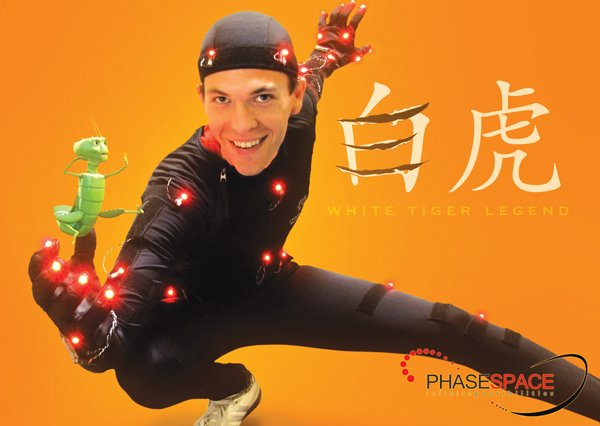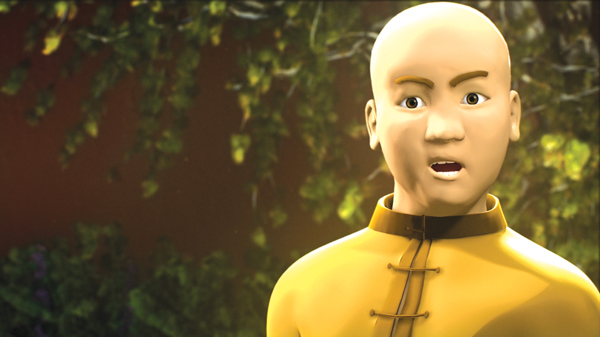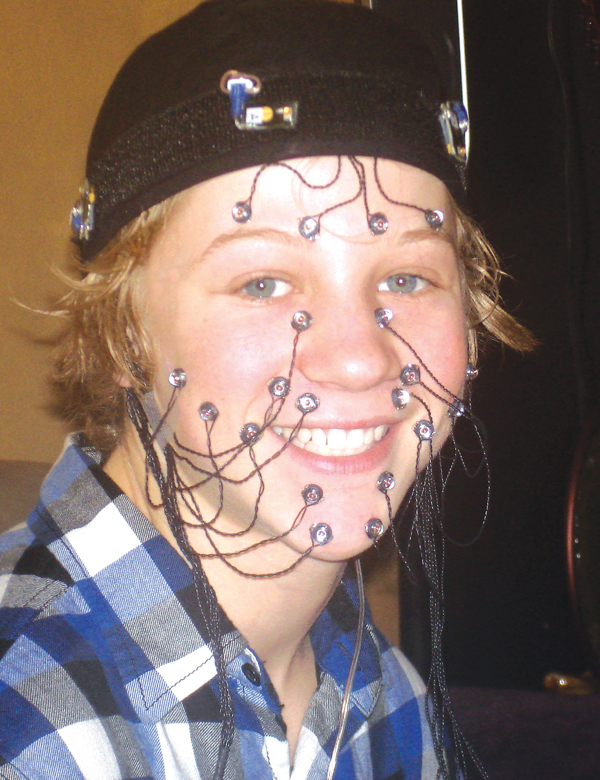
Visual effects artist Kory Juul is directing, producing and performing in his animated martial arts film, 'White Tiger Legend', now in production.
 |
  |
|
Kory recorded 572 shots for the film with motion capture, performing the body motions of over 30 characters himself. The facial performances and voice recordings were provided by a group of actors. Black Belt Scheduled for release in 2012, the motion capture was completed in two phases. The first pass involved facial capture during the voice track recording. Shot at audio post house The Tone Lab, facial capture was done using a 10-camera configuration in a 7 X 10-foot sound booth while the actors recorded their audio takes. “A typical recording session records only audio, but we collected both the audio and the facial capture at the same time,” said Kory. “That allowed us to get both the expressions on the actor and the lip synch in one pass, instead of trying to match the data manually. This saved money and will save the animators a lot of time and effort.” The animators also have video references for the actors’ facial performances, such as eye movements and other subtle gestures, that can be brought back in later in the process. Performance Capture The 572 shots in the film include nine major fight scenes. For most of the motion-capture sessions, Kory was able to run the system and deliver the performances entirely by himself, listening to an edited audio track playing in the background for timing. “While my body provided the movement for each actor, my performance was propelled by the different voices, which allowed me to move ‘in character’ for each part.” Although most motion capture projects record body motion and facial performance all at once on a large stage, Kory finds this introduces a lot of variables and opportunities for error into the process. This way he feels he has more control and flexibility to make changes. For the fight scenes, Kory would record one character, and then go back in and perform his opponent, often using different martial arts styles. “I could hit record, walk in, do the performance and then go back and review it. As the director, I knew exactly what I wanted, so it was fun. Clean Data The shoot also produced very clean data that they have been able to watch in real time and use immediately for cutting the film. Then later, with minimal cleaning, they will use it for final animation. “We were watching it in real time,” said Kory. “We could tell if we needed to do a take again for any reason, without waiting for calculation time.” The editing stage started at the end on August, when we had our first conversation with Kory. The edit involves selecting, cutting and assembling all the motion capture performances. As they assemble the scenes they are also figuring out the cameras. It’s more complicated than cutting footage, he says, but also more flexible. Being a martial artist himself has helped Kory choreograph the opposing fight performances quite accurately, knowing for example that each move requires a countermove. Combining and making the performances ‘mesh’ is one of the roles of editing and camera selection, so that planning for perfect contact isn’t necessary. “If it ever is, we can hand animate those shots.” On-set Decisions Assessing the Edit “This tells us how much of the sets will have to be fully built. The story actually takes place in huge arenas and sweeping landscapes but only as much of these will be built as is necessary, depending on the camera, for efficiency. When the action and performances are locked into a fished film, high res backgrounds, lights, facial performances, eye animations and finessing the hands will all be added. Then we’ll engage a small cleanup crew.” Kory has been building models and assets himself up to now but once the edit is complete in January or February, they will either set up their own studio and hire artists to complete the backgrounds and character models or contract an existing studio. He has designed, built and rigged his models and added a facial system based on one master face. Coming To Life “These layouts are taken out to Final Cut Studio to edit down and streamline the scene. The rig is exported from Motion Builder and the facial performance is exported separately as curves for the blend shapes. These are imported into Maya onto high res models. Then lights are added, IBL lighting and the edit of the high res backgrounds which match the Motion Builder scene. In short, the motion capture/animation work is done in Motion Builder and the high res work is done in Maya. At this stage, Kory is optimistic about completion in 2012. He is also thinking ahead to marketing and film festivals, or alternatively, distribution options. “Completing the edit and previs in this way gives me something solid to show distributors or interested people. For me, seeing these characters come to life now is very encouraging.” Kory Juul |
|
|
| Words: Adriene Hurst Images: Courtesy of Kory Juul |
| Featured in Digital Media World. Subscribe to the print edition of the magazine and receive the full story with all the images delivered to you.Only$79 per year. PDF version only $29 per yearsubscribe |




















